[Disclaimer] The images and text are sourced from the internet. If there is any infringement, please contact us for removal!
Automobile sensors are the sensory organs of the car, converting various input parameters into electrical signals (voltage between 0V and 12V). These signals are sent to the car’s computer (ECU) to achieve electronic system control.
The eight major sensors in automobiles are:
Mass Air Flow Sensor (MAF):
The function is to detect the amount of air entering the engine. The air intake information is converted into an electrical signal sent to the car’s computer (ECU) to determine the fuel injection amount and ignition timing. The air intake amount is the main basis for the ECU’s fuel injection control. If a fault occurs, the measured air intake amount will be inaccurate, and the ECU will be unable to determine when to inject fuel or how much to inject, leading to a rich or lean air-fuel mixture, resulting in engine shaking and excessive emissions.
The mass air flow sensor is divided into vane type, Karman vortex type, volume core type, hot wire type, and hot film type, among which the hot wire type and hot film type are most widely used in modern cars. The two principles are similar, differing only in whether a hot wire or hot film is used. Their characteristics include directly measuring the mass of air inhaled by the engine without needing a temperature sensor for correction, thus ensuring high accuracy, fast response, and low intake resistance. The disadvantages of the mass air flow sensor (hot wire or hot film type) are that they are relatively expensive, and the hot wire or hot film can easily become dirty or break.
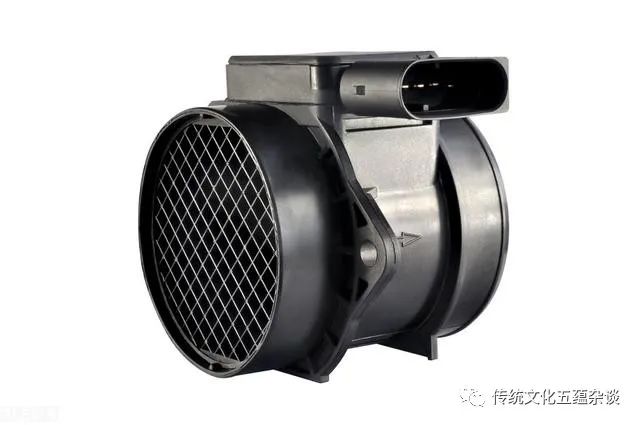
Mass Air Flow Sensor
Throttle Position Sensor (TPS):
The main function is to detect the throttle opening and the speed of its opening, converting it into an electrical signal sent to the computer (ECU). The ECU controls the fuel injection amount and ignition timing based on the signal data. In automatic vehicles, the signal from the throttle position sensor is the primary signal for gear shifting and torque converter locking. Some vehicles use a cable to directly control the throttle opening, while most vehicles use a servo motor controlled by the ECU. The ECU acts as the feedback signal for the throttle position sensor, controlling the throttle opening in real-time. Fault symptoms include unstable idle or no idle, poor acceleration performance, and inconsistent acceleration.
The throttle position sensor includes contact type, variable resistor type, and Hall effect type, which operate on different principles. The contact type is similar to a multi-position switch, characterized by a simple structure and low cost. However, the disadvantage is that contacts may become faulty with long-term use, causing engine RPM to fluctuate during acceleration. The variable resistor type uses the characteristics of a sliding resistor to control the current, which in turn controls the voltage signal sent to the ECU. The ECU controls the fuel injection amount based on different voltage levels, with higher throttle leading to higher voltage, which generally does not exceed 5V. Notably, during idle, the output voltage is around 12V because the current is minimal while the voltage is maximized.
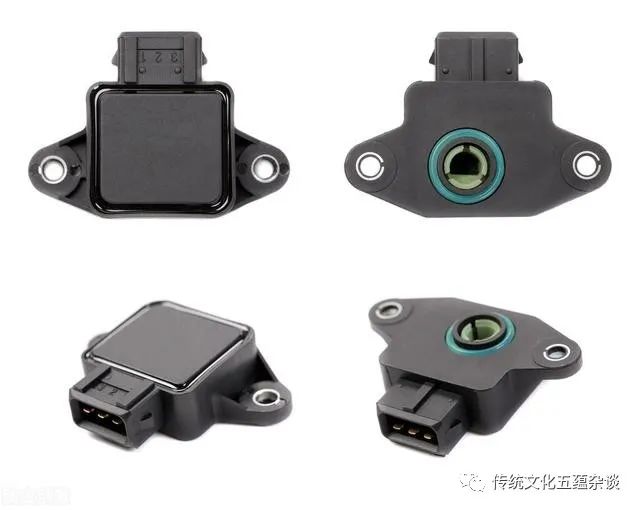
Throttle Position Sensor
Cylinder Position Sensor (CPS or CKP):
The cylinder position sensor, also known as the engine speed and angular position sensor, functions to collect the engine’s speed and crankshaft angle, as well as the first or sixth cylinder’s top dead center position within the first 10 degrees. It is installed on the cylinder block or distributor. Fault symptoms include difficulty starting or starting issues; at this point, the car’s computer (ECU) cannot calculate the fuel injection timing, leading to a halt in fuel injection, akin to a brain-dead individual lacking basic cognitive abilities.
The cylinder position sensor is divided into magnetic pulse type, photoelectric type, and Hall effect type, each with different working principles. The magnetic pulse type generates different high and low voltage signals based on the influence of the magnetic field on electromotive force, providing the ECU with frequency information to control fuel injection timing. The photoelectric type uses the principle of a light-emitting diode and a photoresistor to generate voltage signals. The light emitted by the diode illuminates the photoresistor, creating a voltage signal. When the light is blocked by a gear, the voltage is at its lowest. The Hall effect type uses Hall components to generate voltage signals based on the interference of current.
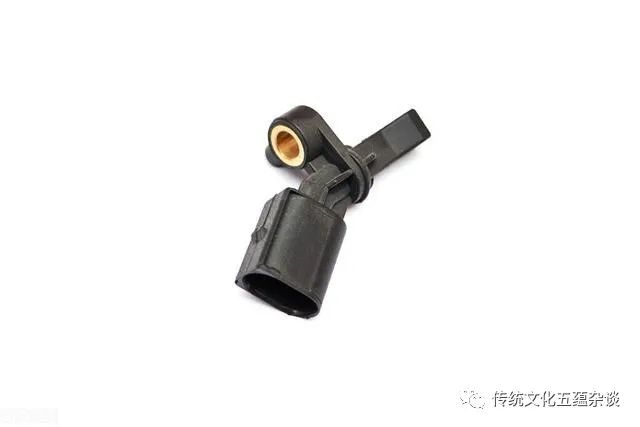
Cylinder Position Sensor
Camshaft Position Sensor (CMP):
The camshaft position sensor, also known as the phase sensor, camshaft angle sensor, synchronization signal sensor, cylinder position sensor, or first cylinder top dead center sensor, detects the camshaft position and angle to determine the top dead center of the first cylinder. The collected signals provide the car’s computer (ECU) to control the position and stroke of each cylinder’s piston, as well as to control fuel injection timing and ignition sequence. Fault symptoms include difficulty starting, unstable idle, lack of acceleration, vehicle shaking, and increased fuel consumption.
The camshaft position sensor includes photoelectric type, Hall effect type, and magnetic type, which operate on principles similar to the cylinder position sensor, with the difference being in the voltage frequency signals provided to the ECU. Their ultimate goal is to measure the engine’s state at different speeds and provide this information to the ECU to control the optimal fuel injection amount and air-fuel ratio (14.7:1), making the car more economical and reducing environmental pollution.
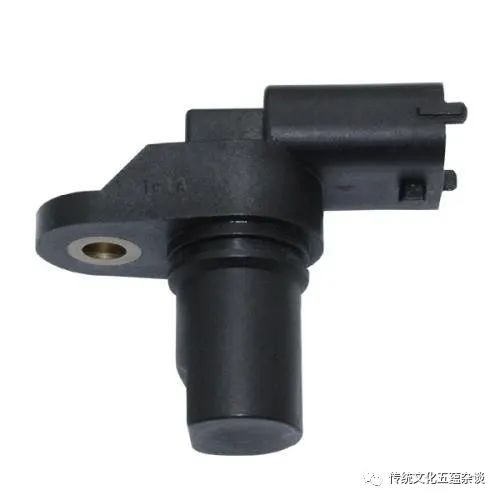
Camshaft Position Sensor
Oxygen Sensor:
The oxygen sensor detects the oxygen content in the engine’s exhaust gases and generates a potential difference based on the amount of oxygen present. This voltage potential difference is sent to the car’s ECM (Engine Control Module). Oxygen sensors are divided into front and rear oxygen sensors; the front oxygen sensor adjusts the fuel injection amount and calculates ignition timing based on the signal. The rear oxygen sensor compares data with the front oxygen sensor to check if the catalytic converter is functioning properly. Fault symptoms include an inability to detect oxygen content, leading to an imbalanced air-fuel ratio, unstable engine idle, poor acceleration, stuttering, increased fuel consumption, and fluctuating exhaust flow.
Oxygen sensors are classified into zirconium dioxide and titanium dioxide types, operating on similar principles. During operation, high-temperature exhaust gases cause ionization of oxygen; the inner side of the zirconium tube is connected to the atmosphere, resulting in high oxygen concentration, while the outer side is directly exposed to exhaust gases, leading to low oxygen concentration. Oxygen ions diffuse from the atmospheric side to the exhaust side, creating a potential difference. When the mixture is too lean, there are more oxygen ions in the exhaust, resulting in a small potential difference (around 100mV). When the mixture is rich, there are fewer oxygen ions, leading to a large potential difference (around 900mV). Interestingly, the potential difference changes abruptly rather than gradually from 100mV to 900mV or vice versa; it fluctuates around the theoretical air-fuel ratio (14.7:1).
As mentioned earlier, oxygen can only be ionized under high-temperature exhaust conditions, which is most evident during cold starts when the engine runs at high speed for a while before returning to normal idle. This period is essential for warming up the exhaust.
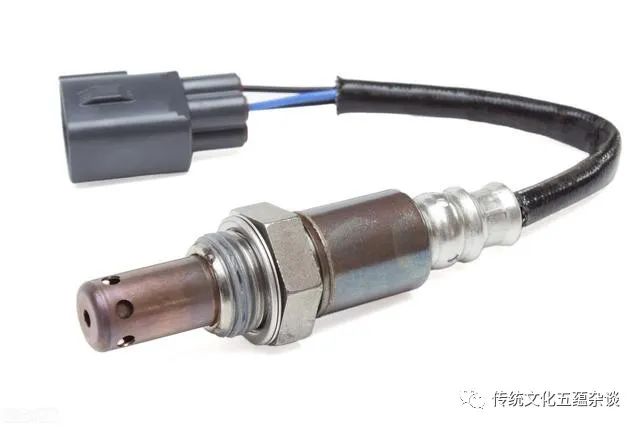
Oxygen Sensor
Intake Pressure Sensor (MAP):
The intake pressure sensor is installed on the intake manifold and functions to detect the vacuum level of the intake manifold air, providing data to the computer for controlling the fuel injection amount and throttle opening, thus adjusting the air-fuel ratio and correcting issues of overly rich or lean mixtures. Fault symptoms include poor engine idle, difficulty starting, and stalling after starting.
The intake pressure sensor includes semiconductor pressure-sensitive resistors and capacitive types, which operate on different principles. The semiconductor pressure-sensitive resistor uses the Wheatstone bridge principle; as atmospheric pressure changes, the resistance value changes, leading to a voltage change. When the Wheatstone bridge breaks the original voltage balance, the compensated voltage and output voltage reveal the change in voltage, which is provided to the car’s computer as the basis for fuel injection. The capacitive type is rarely used and will not be further discussed.
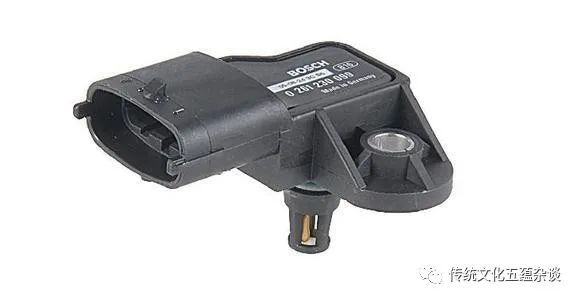
Intake Pressure Sensor
Temperature Sensors:
These include intake temperature, water temperature, oil temperature, air conditioning temperature, transmission oil temperature, coolant temperature, and indoor temperature sensors. They provide critical signals for engine fuel injection, automatic transmission shifting, clutch locking, and oil pressure control.
Common types include thermistors, thermocouples, and metal temperature sensors.
Thermistors can measure very small temperature changes, have high sensitivity, simple structure, and are cost-effective. However, the non-linearity between resistance and temperature can be significant, sometimes requiring three-point linear correction. Negative temperature coefficient thermistors decrease resistance with increasing temperature, while positive temperature coefficient thermistors increase resistance as temperature decreases.
Thermocouples can measure small temperature changes, are highly sensitive, but compared to thermistors, they have better shock resistance. The downside is that they require standard contacts and are challenging to achieve high precision without careful correction at room temperature.
Metal temperature sensors are suitable for measuring a wide average temperature range without requiring standard contacts, offering higher precision around room temperature compared to thermocouples.
The most commonly used are thermistor temperature sensors, which utilize negative temperature coefficient thermistors that increase resistance as temperature decreases.
Through temperature change signals, corrections are made to the engine’s fuel injection and timing, adjusting the air-fuel ratio. For example, during cold starts, a richer mixture is supplied, while the opposite occurs during warm engine operation.
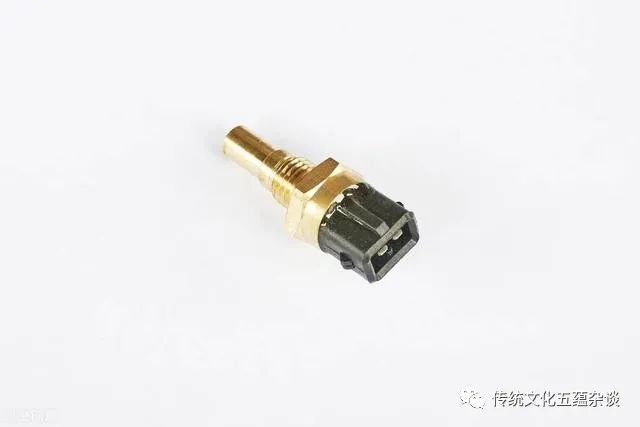
Temperature Sensor
Knock Sensor:
The knock sensor primarily detects various frequencies of vibrations in the engine and converts them into different voltage signals. When the engine experiences knocking, the knock sensor can sense the amplitude and generate voltage signals. The knock signal is fed back to the computer (ECU) to adjust the ignition advance angle. The knock sensor is typically installed on the cylinder block.
In addition to the sensors mentioned above, there are many others, such as sunlight sensors, rain sensors, collision sensors, vehicle speed sensors, steering wheel position sensors, seat position sensors, wheel speed sensors, etc.

Friendly Reminder:This platform shares images and text information for reference and learning purposes only.
⊙ Copyright Statement: The article is sourced from the internet. If there is any infringement, please contact us for removal.
Please do not purchase fishing or bird-catching equipment, and reject killing. Do not play violent video games; such games are fundamentally similar to actual killing. Avoid reading pornographic articles; lust is the root of reincarnation and disaster. Cause and effect follow closely. Remember!
Wishing: Peace and harmony in the world, clarity of the sun and moon; timely winds and rains, no disasters; national prosperity and civilian peace, no need for arms; promote virtue and kindness, and practice courtesy; no theft or grievances; the strong do not bully the weak; everyone gets their due; no illness or calamity, wealth and health; longevity and good virtue, with a good start and a good finish.